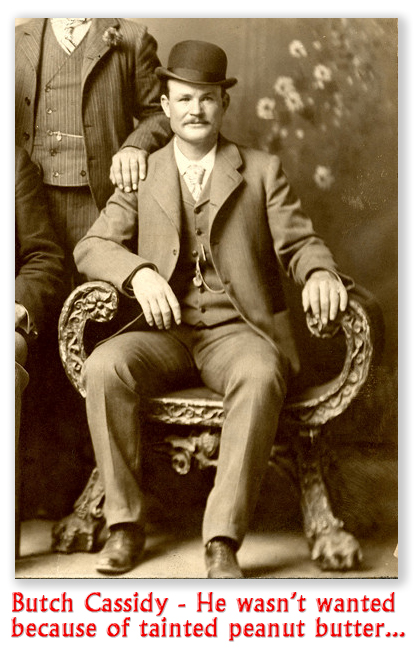We post news and comment on federal criminal justice issues, focused primarily on trial and post-conviction matters, legislative initiatives, and sentencing issues.
VIVA LA DIFFERENCE
 Since the Supreme Court ruled two years ago in Johnson v. United States that the “residual clause” of the Armed Career Criminal Act was unconstitutional, many forests have been felled to produce the paperwork blizzard that has buried federal courts in sentence challenges.
Since the Supreme Court ruled two years ago in Johnson v. United States that the “residual clause” of the Armed Career Criminal Act was unconstitutional, many forests have been felled to produce the paperwork blizzard that has buried federal courts in sentence challenges.
The ACCA requires that if a convicted felon caught with a gun has three prior convictions for crimes of violence or drug offenses, the sentence that must be imposed is no longer zero to 10 years, but rather 15 years to life. There are three ways a prior offense may be a “crime of violence” under the ACCA. The offense must be either
(1) an enumerated offense (burglary, arson, extortion or use of explosive”); or
(2) an offense that has as an element the threatened use or actual use of physical force against a person; or
(3) an offense that presents a significant risk of physical harm to others.
The first clause is called the “enumerated clause,” because it enumerates certain offenses that count, period. The second is called the “force clause” or “elements clause,” because it relates to crimes that include elements of purposeful force. The third is called the “residual clause,” because it sweeps up what’s left.
 In Johnson, the Supreme Court said the residual clause was so vague that no one could figure out what it meant. For that reason, it was unconstitutional to use the residual clause to make someone liable under the ACCA. The problem was that the same (or very similar) language was used elsewhere in the same statute (18 USC 924) and the criminal code (such as in 18 USC 16(b)). One might think that Johnson invalidated the residual clause in those definitions, too. But one might be wrong…
In Johnson, the Supreme Court said the residual clause was so vague that no one could figure out what it meant. For that reason, it was unconstitutional to use the residual clause to make someone liable under the ACCA. The problem was that the same (or very similar) language was used elsewhere in the same statute (18 USC 924) and the criminal code (such as in 18 USC 16(b)). One might think that Johnson invalidated the residual clause in those definitions, too. But one might be wrong…
Whether Johnson invalidates the residual clause in the 18 USC 16(b) “crime of violence” definition was argued a little over two weeks ago in the Supreme Court. That decision will issue before next summer. Meanwhile, battle continues to rage in the lower courts, leading to some rather surprising claims.
 We confess here that we like bank robbery. It’s old fashioned – you know, Jesse James, Bonnie and Clyde, Willie Sutton – and an easy crime to understand. In a federal criminal world of meth labs, insider trading, trading in incorrectly-packeted lobster and throwing back undersized fish, bank robbery is a crime that’s pretty easy to understand. We suspect that someone like Virginia Governor Bob McDonnell never felt a frisson of illicit thrill when a political donor bought his wife an Oscar de la Renta dress, not the way Butch Cassidy was pumped when he knocked over the San Miguel Valley Bank. After all, when was the last time you saw a movie about the Feds trying to take down a CEO for selling tainted peanut butter?
We confess here that we like bank robbery. It’s old fashioned – you know, Jesse James, Bonnie and Clyde, Willie Sutton – and an easy crime to understand. In a federal criminal world of meth labs, insider trading, trading in incorrectly-packeted lobster and throwing back undersized fish, bank robbery is a crime that’s pretty easy to understand. We suspect that someone like Virginia Governor Bob McDonnell never felt a frisson of illicit thrill when a political donor bought his wife an Oscar de la Renta dress, not the way Butch Cassidy was pumped when he knocked over the San Miguel Valley Bank. After all, when was the last time you saw a movie about the Feds trying to take down a CEO for selling tainted peanut butter?
Jeff Hunter was a bank robber, now doing 270 months for the offense. The last 60 months are a consecutive sentence for using a gun during a crime of violence. After Johnson, Jeff filed a post-conviction motion claiming that the extra 60 months was unwarranted, because while he had a gun, a bank robbery is no longer a crime of violence after Johnson.
 This might seem counter-intuitive to you. Of course a bank robbery is a crime of violence, you say. Just as you never should take a knife to a gunfight, you need never take a gun to a nonviolent crime. Who’s ever heard of an armed inside trader?
This might seem counter-intuitive to you. Of course a bank robbery is a crime of violence, you say. Just as you never should take a knife to a gunfight, you need never take a gun to a nonviolent crime. Who’s ever heard of an armed inside trader?
Last week, the 1st Circuit agreed that while Johnson may sweep broadly, it doesn’t sweep that broadly. No matter what the constitutional status of the residual clause might be, the Circuit said, Jeff’s offense remains a “crime of violence” because of the force clause. The 1st has already held that a bank robbery “has as an element the use, attempted use, or threatened use of physical force against the person of another” for purposes of the career offender guidelines (USSG 4B1.2(a)(1)), which use the same “crime of violence” definition as does the ACCA.
But the 924(c) definition varies slightly. All of the others refer to using physical force against another person. The 924(c) subsection definition refers “use of physical force against the person or property of another.”
Aha! Jeff argued that there is a difference. The 1st agreed, but said that difference does not help him. “The addition of ‘or property’ renders § 924(c)(3)(A)’s scope greater than that of § 4B1.2(a)(1),” the court said. In other words, under the ACCA, if Butch Cassidy had robbed the Union Pacific Overland Flyer by threatening to shoot the engineer, that would have been a crime of violence. If he had robbed it by threatening to shoot the engineer’s dog, it would not have been.  However, if he robbed the First National Bank of Winnemucca by threatening to shoot the branch manager’s dog (which was “property”), the offense would been just as much a “crime of violence” as if he had threatened to shoot the manager himself.
However, if he robbed the First National Bank of Winnemucca by threatening to shoot the branch manager’s dog (which was “property”), the offense would been just as much a “crime of violence” as if he had threatened to shoot the manager himself.
Ah, the beauty of the law! Because the statute says bank robbery is effected by “by force and violence, or by intimidation,” the 1st Circuit said, “we hold that federal bank robbery, and a fortiori federal armed bank robbery, are crimes of violence under the force clause of § 924(c)(3).”
Hunter v. United States, Case No. 16-2483 (1st Cir., October 16, 2017)
– Thomas L. Root


